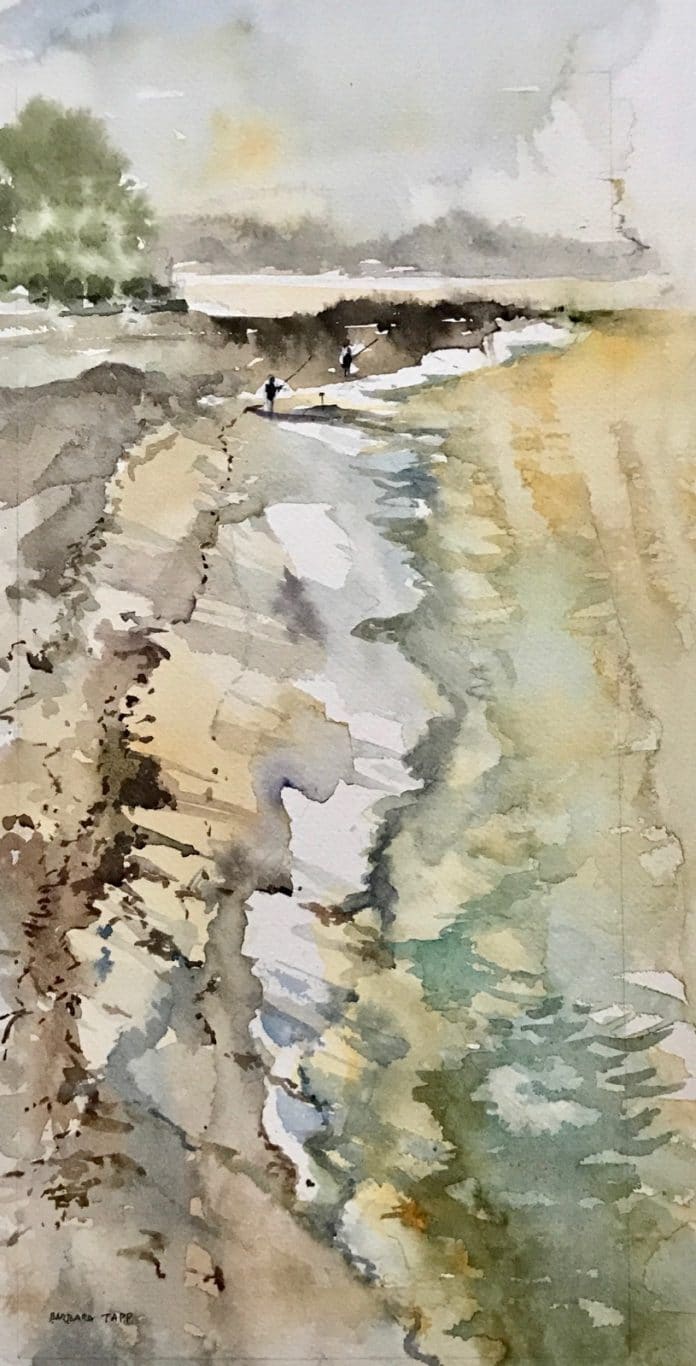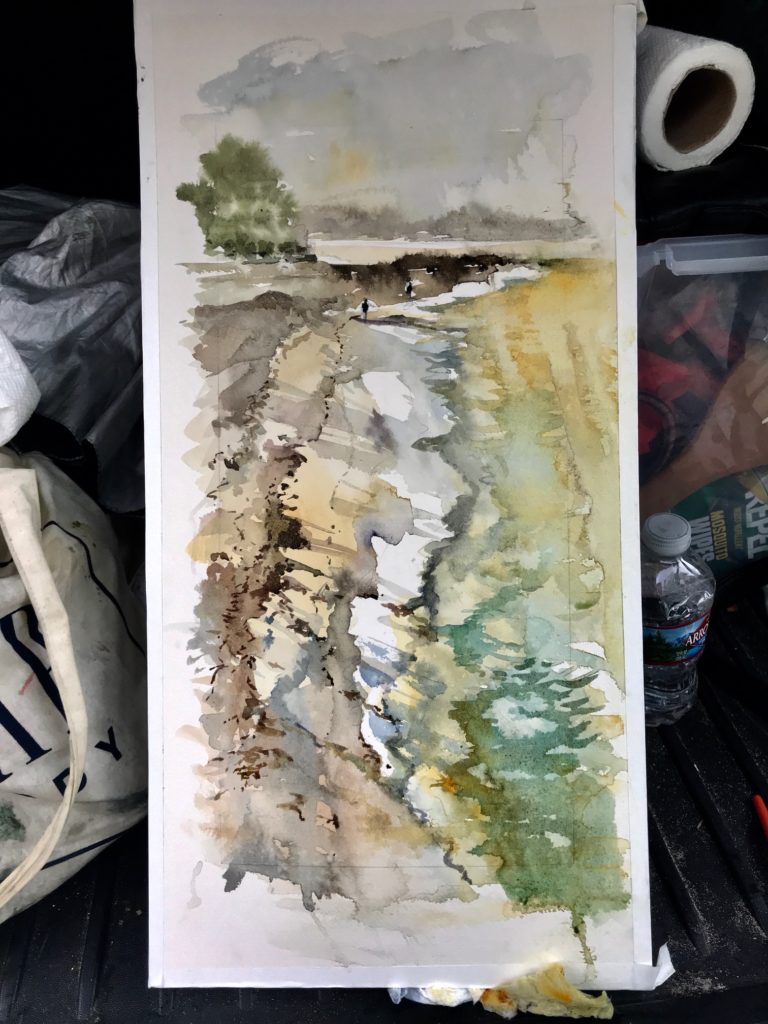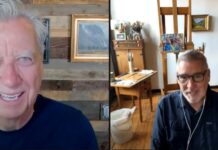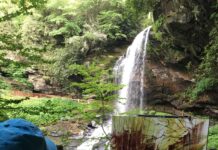by Barbara Tapp
Participating in a multi-day plein air painting event leads to growth — and many questions. At Capitola this year, I created two paintings that reached my mark of satisfaction. The other seven left me wanting much more. A few days later, I was left asking why.
For a plein air painting to succeed, there must be a combination of stimulation, strong subject matter, color, composition, light, contrast, and movement/perspective. I’m currently five years into painting, three years into plein air, and one year into painting almost full-time.
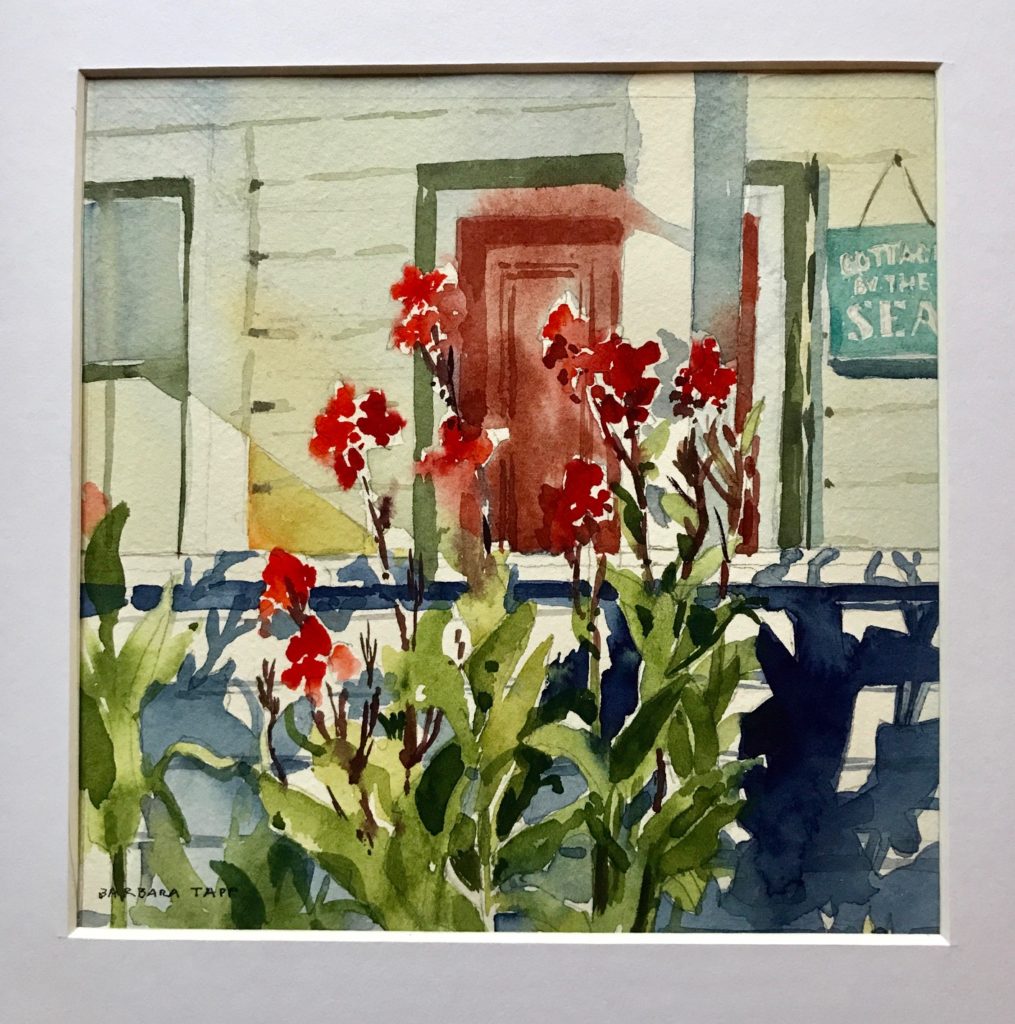
After Capitola this year, I was consumed with why my other paintings failed and what made the others successful. Is trying to recognize this going to help me advance?
These two paintings above failed to reach my mark. So, what is my mark? In my opinion, they failed to stimulate in design, color, and contrast. In short, I did not compose these paintings, I copied what was there. Argh! It can be so hard to avoid that. They took an effort to paint and I got bored, so was not fully engaged or committed as I painted them.
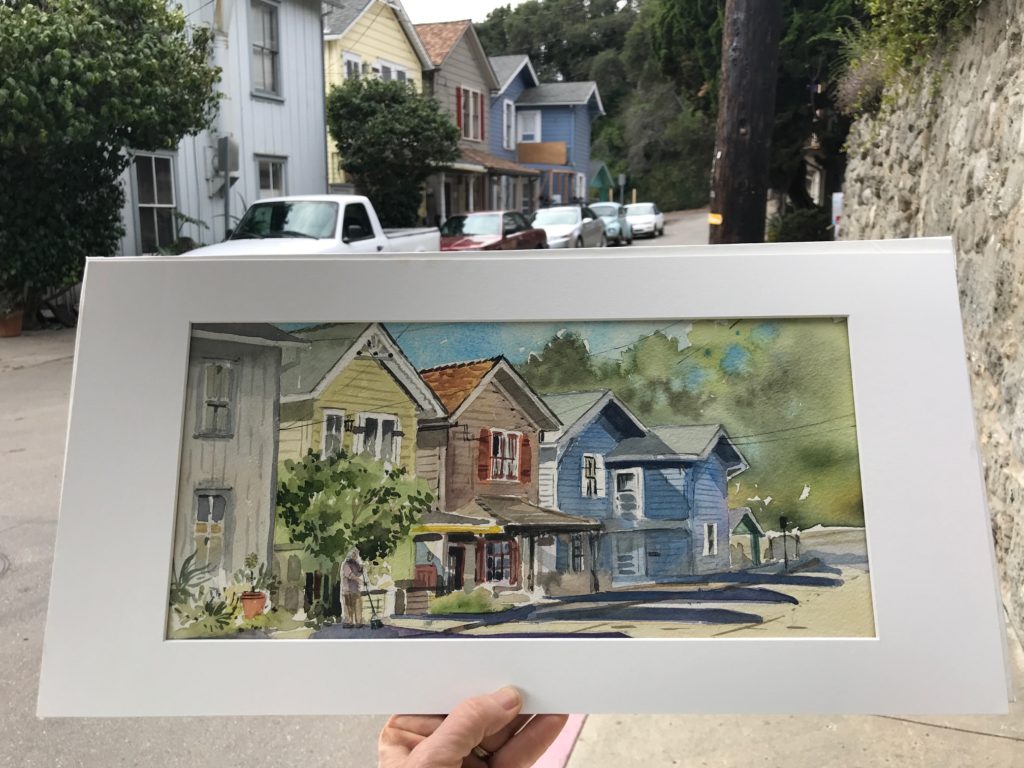
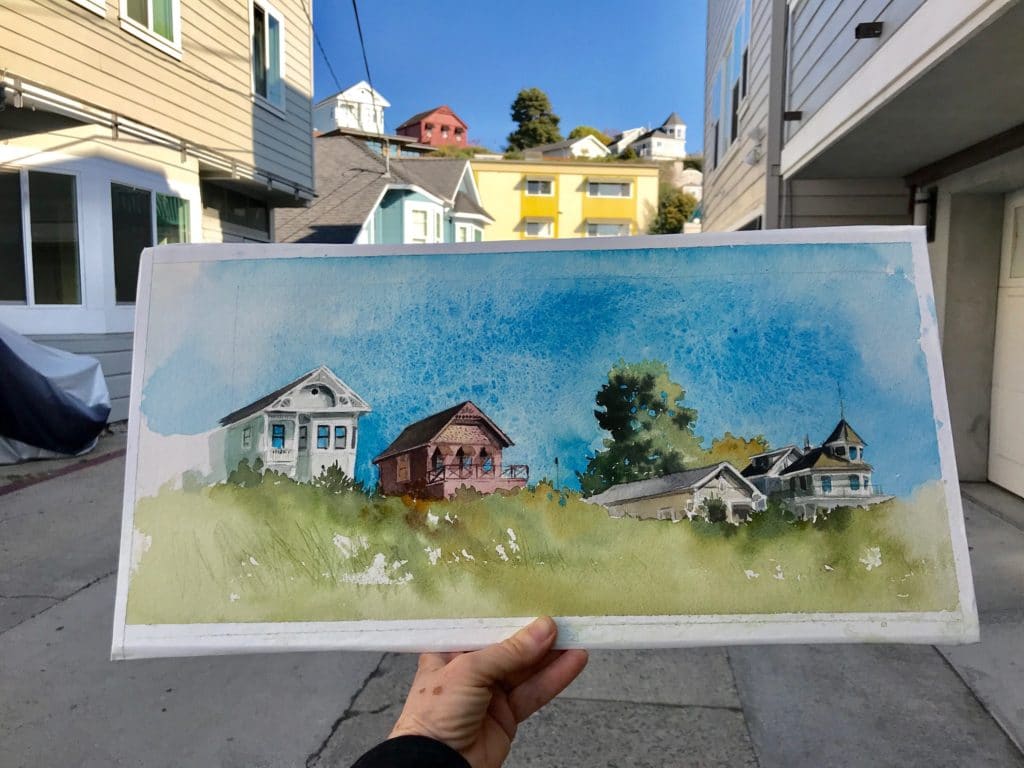
In the top two, I was on fire, with all senses engaged feeding off each other. I abandoned my fallbacks/safety nets or things I rely on — like strong drawing skills and draftsmanship. In the top two, I painted fast and furious to get the information down. In “The Spirit of Capitola,” there was no set pattern to the plants, just a sense of what they were doing. The shadows on the right were defined at first, so I put that important information in immediately. The painting evolved around those shadows in support.
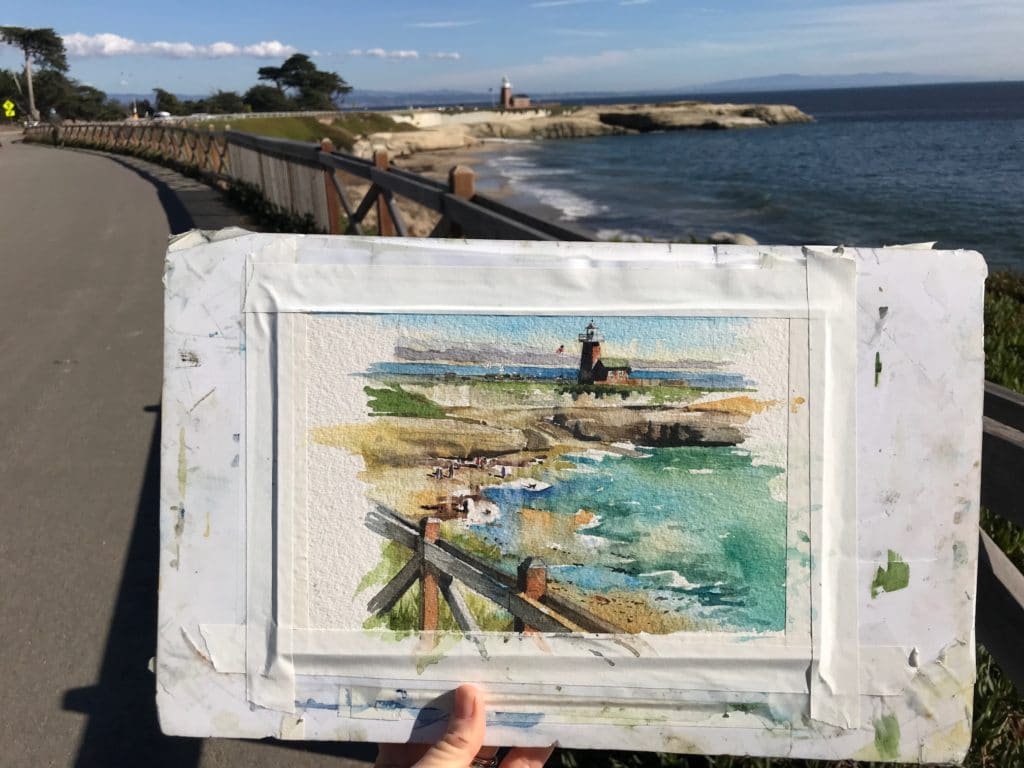
The beach scene painted in pouring rain was an explosion of fast brushstrokes. No time to think other than sticking to my original composition of the water’s edge coming toward me from the fishermen. All brushstrokes were there to support that element of the piece. I was NOT bored as I painted these.
The next day, after the show was over, I painted another one that hit the mark. It painted itself.
Enough said.
How do you define “success” in your plein air paintings?
This article was featured in PleinAir Today, a weekly e-newsletter from PleinAir magazine. To start receiving PleinAir Today for free, click here.

